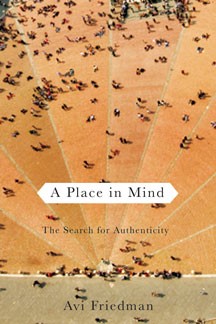
A Place In Mind: The Search For Authenticity
Avi Friedman
Véhicule Press
$19.95
paper
172pp
9781550652826
A Place in Mind is divided into 16 chapters, each beginning with a description of a different location. Whether he is in Tuscany, Tijuana or Iqaluit, Friedman uses his reaction to his surroundings as a springboard to reflect on different aspects of each place. In theory, this is a winning formula. With a few sentences, Friedman conjures up a teahouse in Istanbul or a market in China and these backdrops provide natural starting points, especially for a traveler, to ask questions about what works and what doesn’t in these different locales. Looking at high-density public housing in Hong Kong, for example, Friedman asks: “How did their occupants cope with noise, ventilation, garbage collection, and parking … ?” Rather than seek specific answers from the residents of Hong Kong, however, Friedman embarks on a general discussion about density: what it is, how the automobile contributed to the growth of the North American suburb, and so on, until readers have lost sight of the place in which Friedman started. In the end, readers learn nothing about what it is like to live in such a high-density area.
This choice to keep theory and practice separate limits the exploration of the very places that inspire Friedman. His observations remain superficial, slipping at times into cliché: the slums in Tijuana are poor but they have soul; the Osteria in Tuscany is warm and lively; the streets of downtown Fargo are cold and deserted on a February morning.
Friedman spends the rest of the time citing facts, and the bulk of the book reads like a historical survey of place. Readers learn how restaurants developed, when public markets gave way to supermarkets, the nature of public art, and the history of the modern office. Much of this material is fascinating and Friedman has carefully chosen his facts to provoke readers into thinking about how Western society got to where it is today. We spend more time indoors, watching television or sitting in front of the computer; we don’t walk as much as we used to; obesity is on the rise; and personal interaction is down. Things are bleak indeed.
Unfortunately, after cataloguing our modern woes, Friedman does not offer much in the way of solutions. We can, he tells us, “look to the past to discover what we ought to build in the future.” And looking to the past is essentially what Friedman does in A Place in Mind. While he does present examples of “good” contemporary places to emulate, the book is more an exercise in nostalgia than a guide to building the future; less a search for authenticity than an elegy to it. mRb






0 Comments